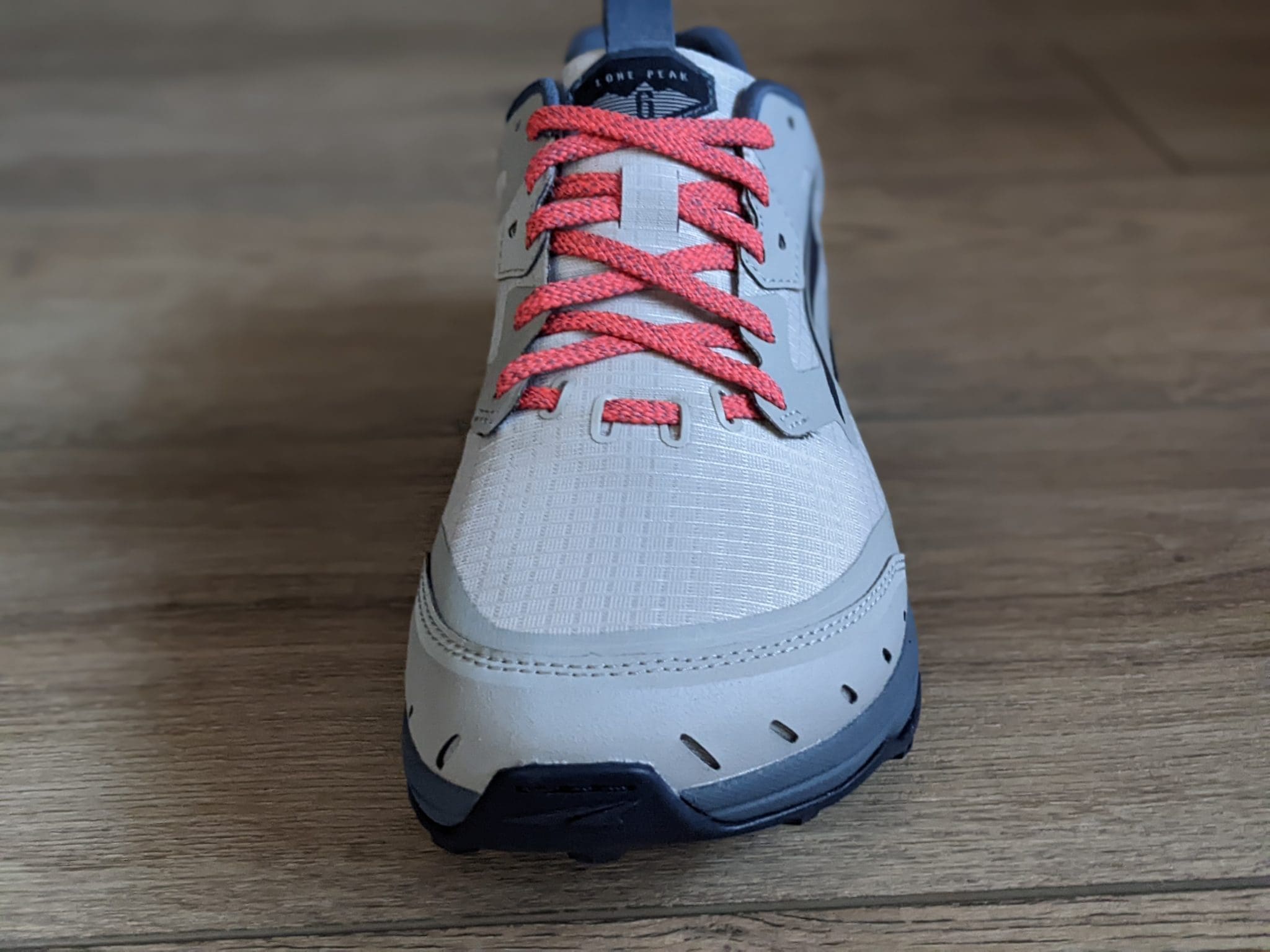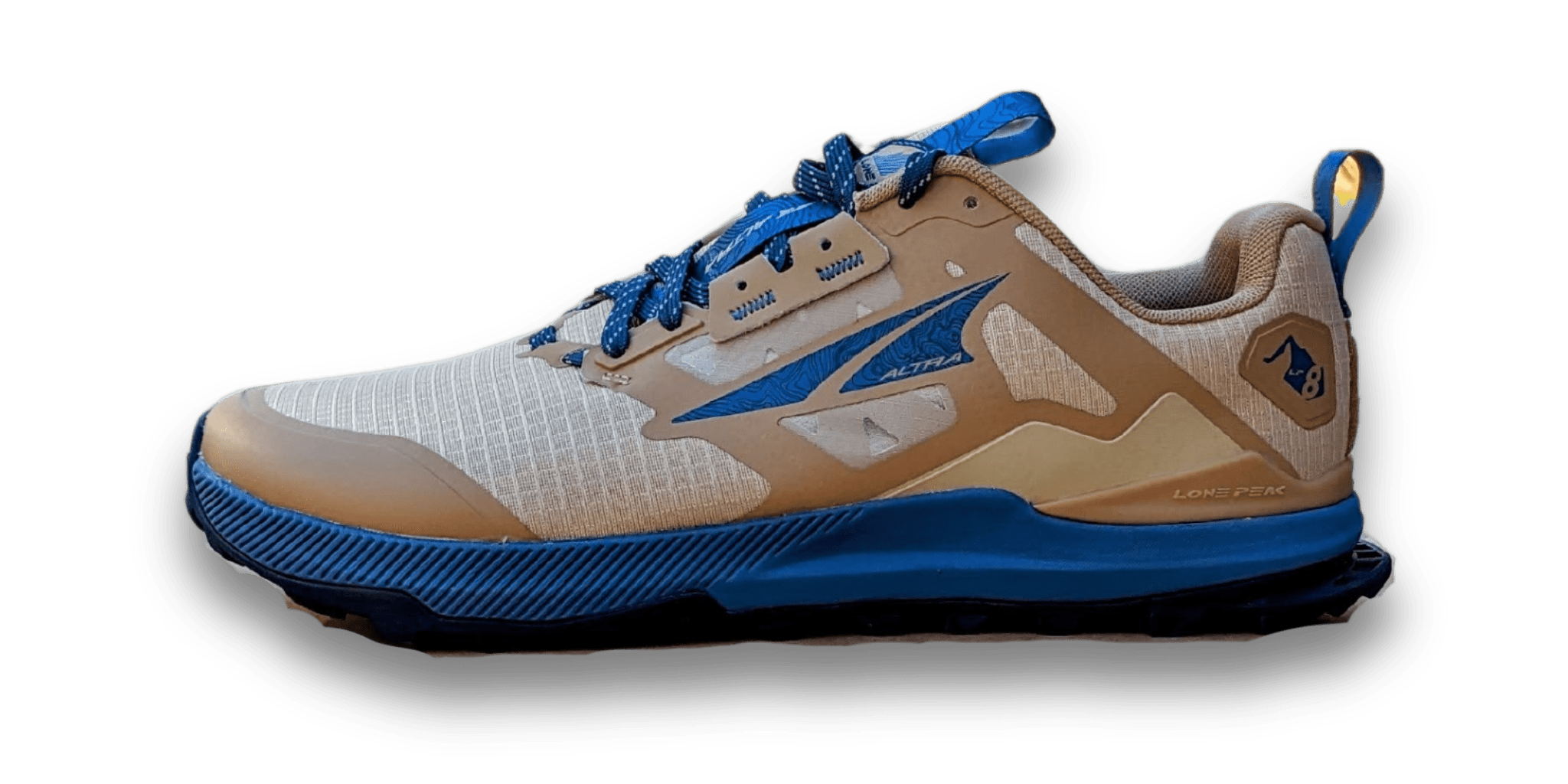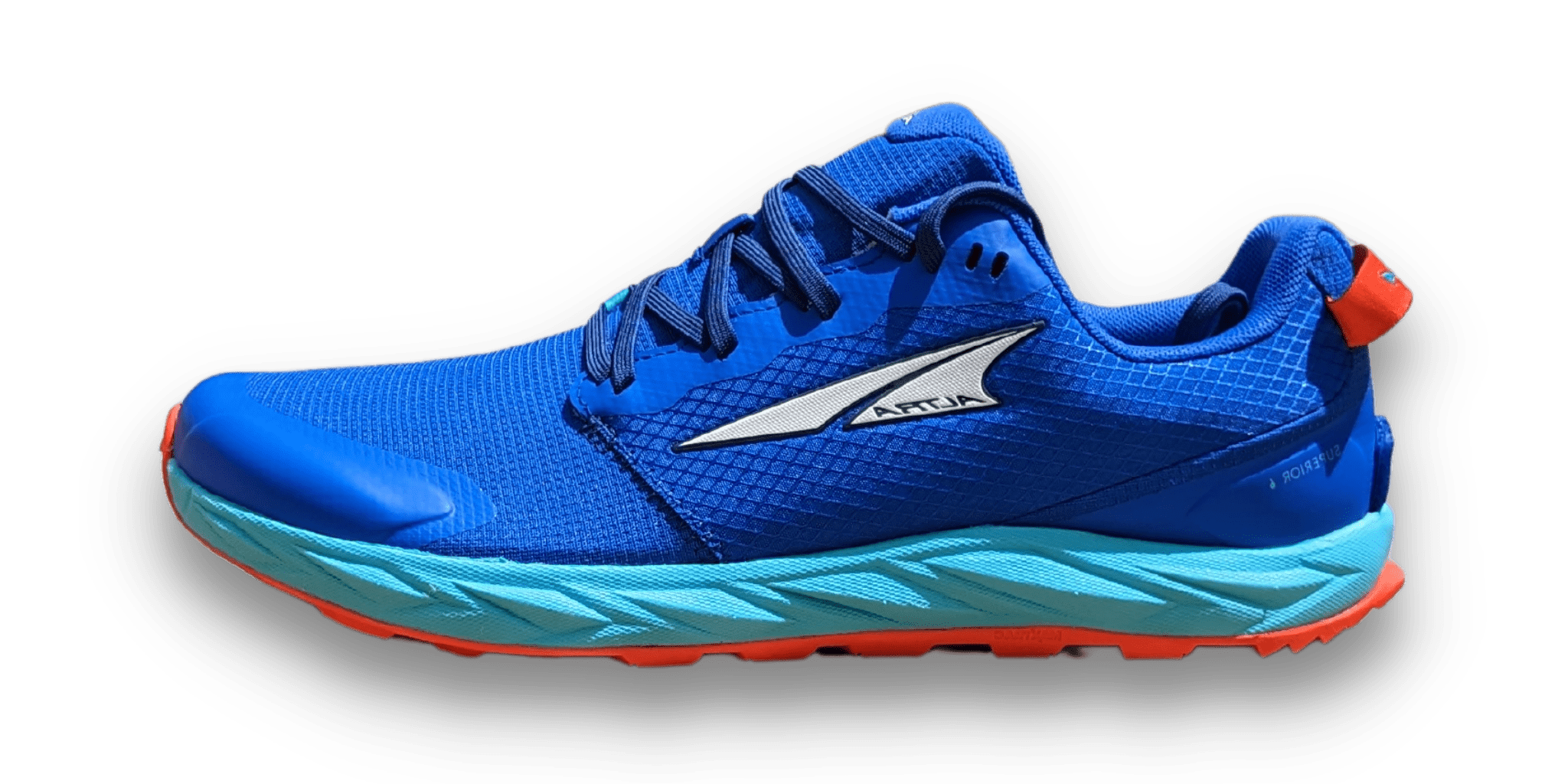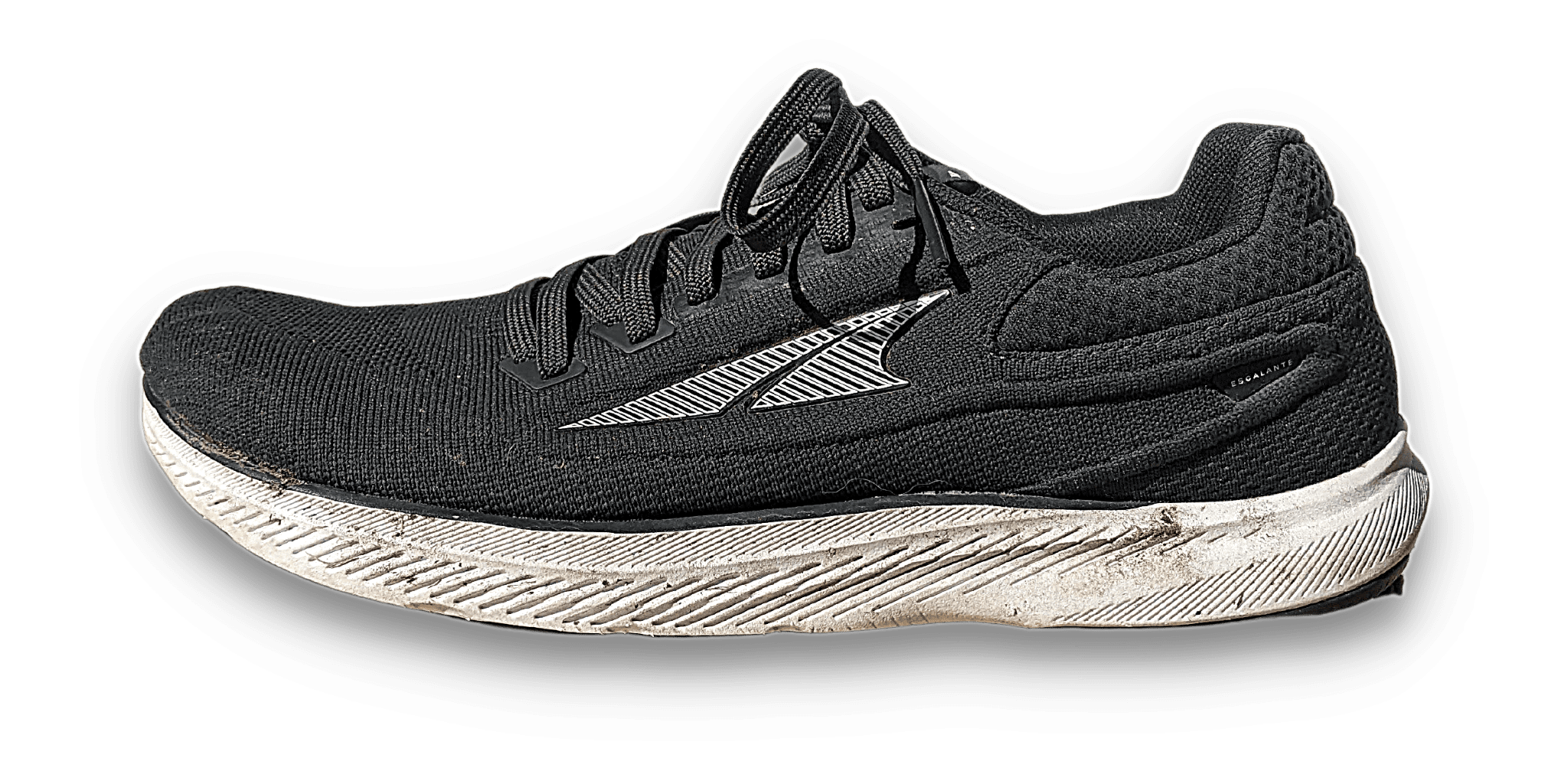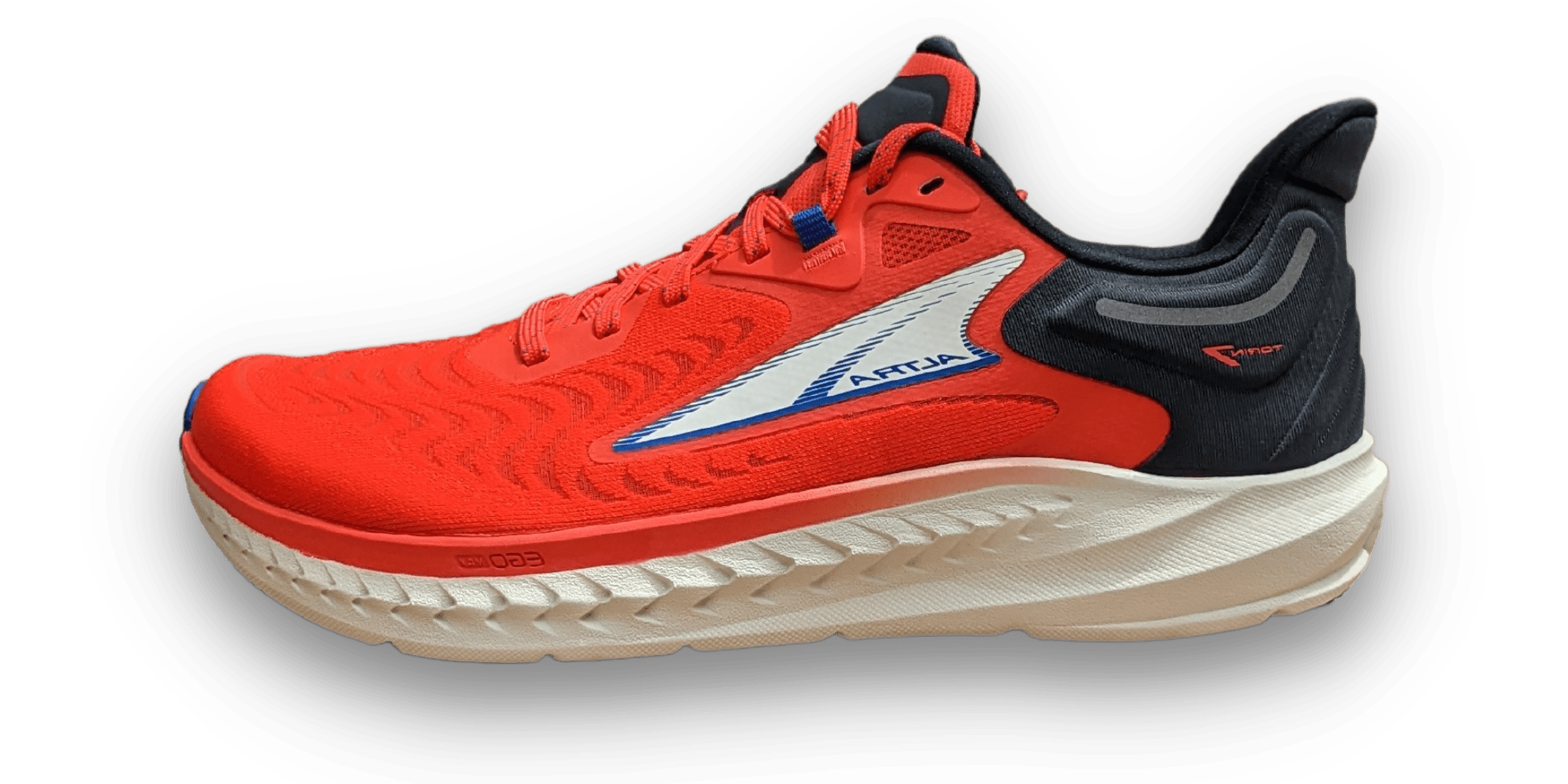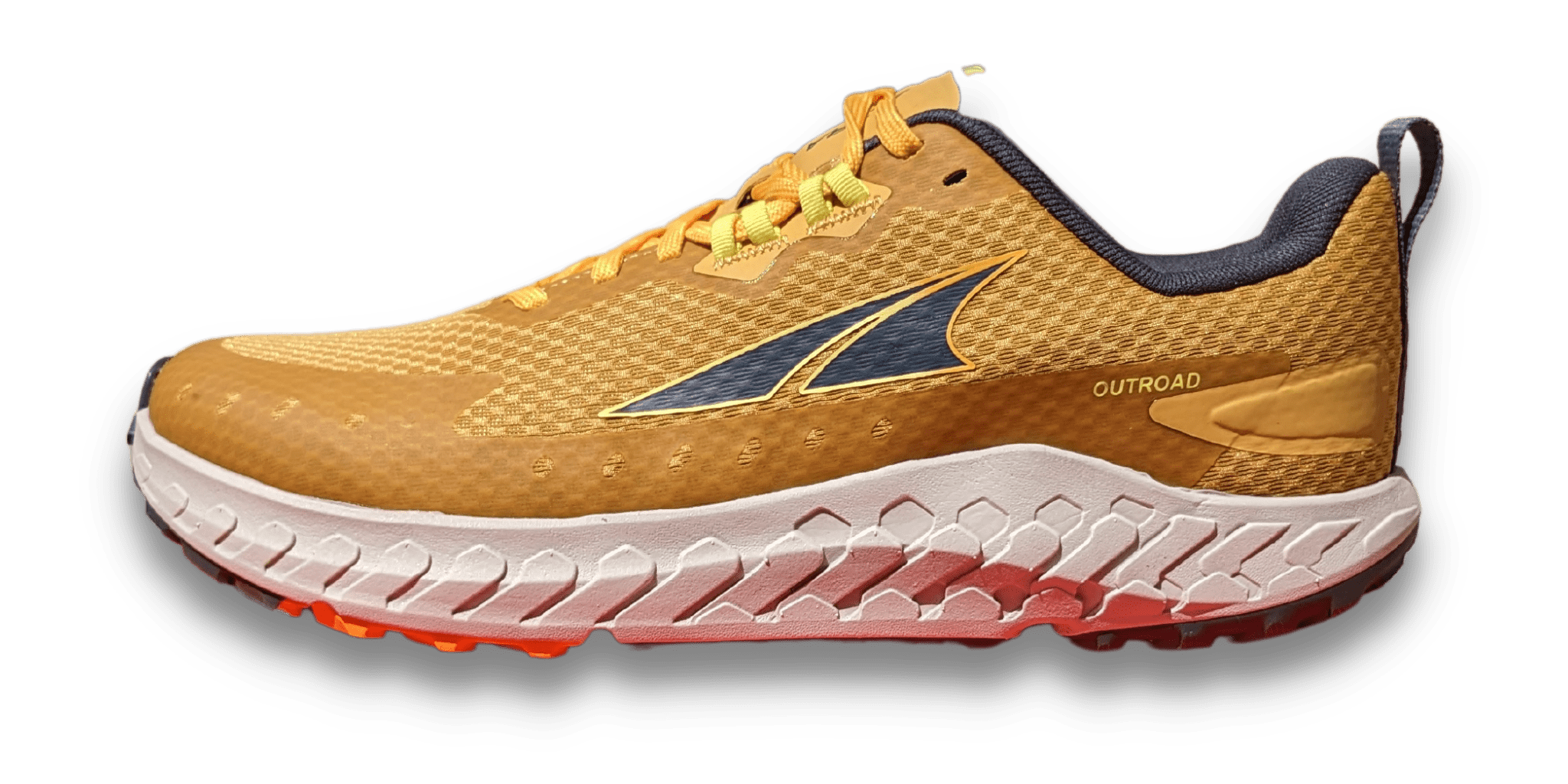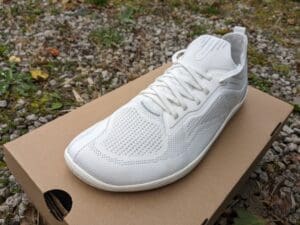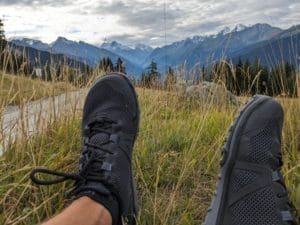Today we’re going to look at two top trail shoes from Altra that have been the cornerstones of the trail running shoe lineup for nearly 10 years now. They both share similarities, but they target a slightly different terrain, and the fit can sometimes be the ultimate decider.
At the end of this post, I’m also giving my super simple formula to help you decide which shoe is for you!
What’s Different about Altra’s?
If you’re new to Altra, it’s worth noting two specific (and unique) elements that set Altra apart from the other running shoes on the market.
- All Altra shoes are zero-drop, meaning your heel and your forefoot sit at the exact same height from the ground. That’s not true of most other shoes on the market.
- Altra also makes all of their shoes with plenty of room in the toe box. If you’ve never ventured into “foot-shaped” running shoes, you’re in for a freeing treat!
That’s it for the general factors of the Altra shoe line, so let’s break down the details of both the Altra Lone Peak and the Altra Superior.
Disclaimer: By clicking through the links on this page and purchasing the products, you’ll be helping me out. This is done because I receive a kickback from the sellers at no extra cost to you! I thank you so much for helping me continue with the website!

Altra Lone Peak
Cushioned but still nimble for those mid to long-distance races
AltraRunning.com
(30-day return window)
$150
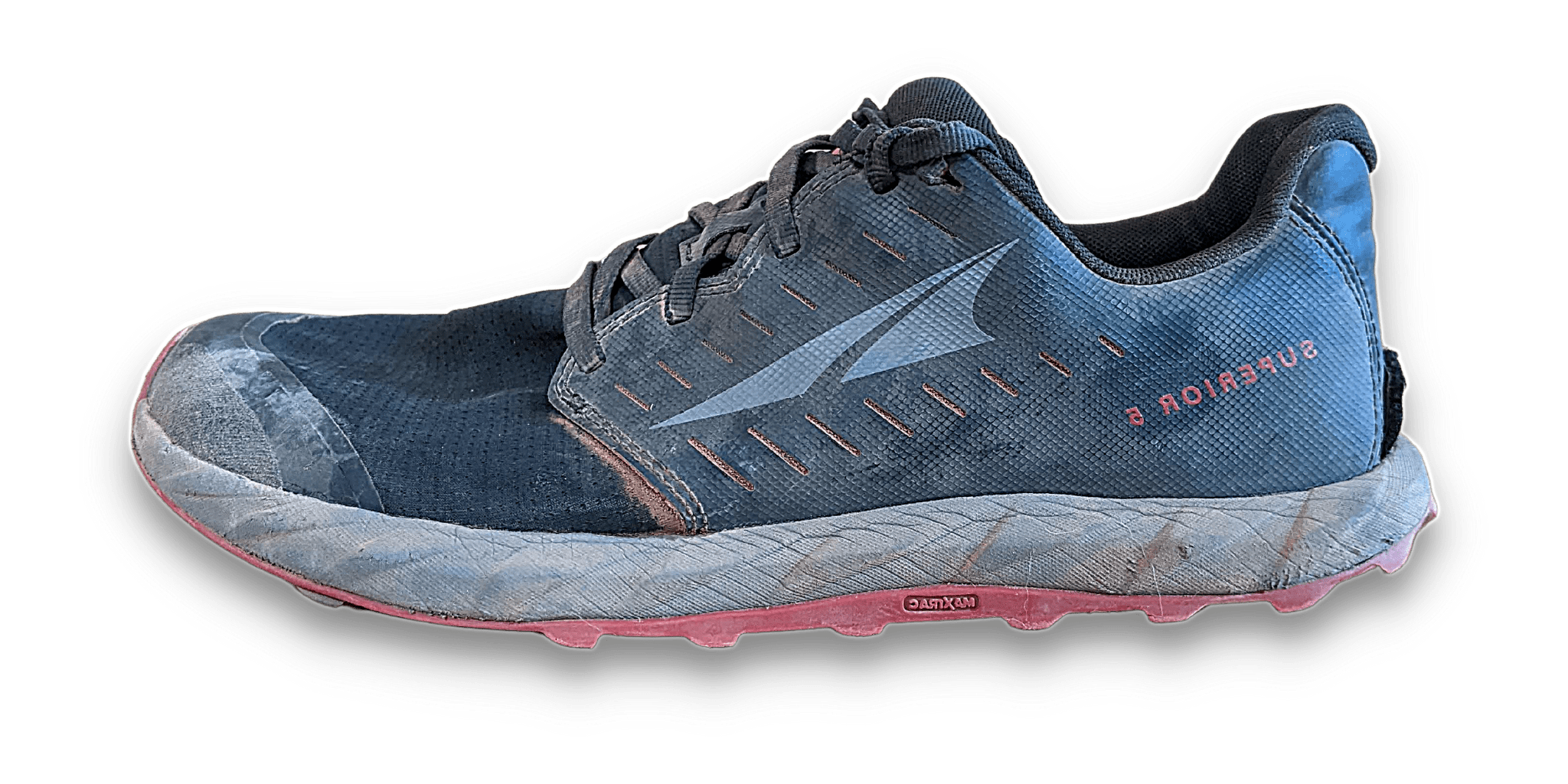
Altra Superior
Light, agile, and unobtrusive short-distance race shoe
AltraRunning.com
(30-day return window)
$140
The Altra Lone Peak is the OG of the Altra lineup. Every trail runner (and a few non-trail runners) heard the hype about these unique shoes and was desperate to try them.
Originally they were wide, squishy, and had a slipper-like feel –not something anyone had seen in the running market before. A shoe where your heel is the same height as your forefoot, but still, offers cushion? You were either a trail runner that loved them or hated them!
Which Altra Shoe is for you?
Take a quick 4-question quiz to identify the perfect Altra running shoe for your feet! You'll get both road and trail options based on your answers!
Version 7 of the Lone Peak is still a throwback to those early days, but lucky for us they’ve matured to offer more longevity and a well-rounded midsole.
No more bulky heel cushioning and cheap uppers. Instead, the upper now supports overlay protection in all the right areas, and the trimmed-down heel pairs comfort with precision. The fit of the heel on the Superior and the new Lone Peak is very similar.
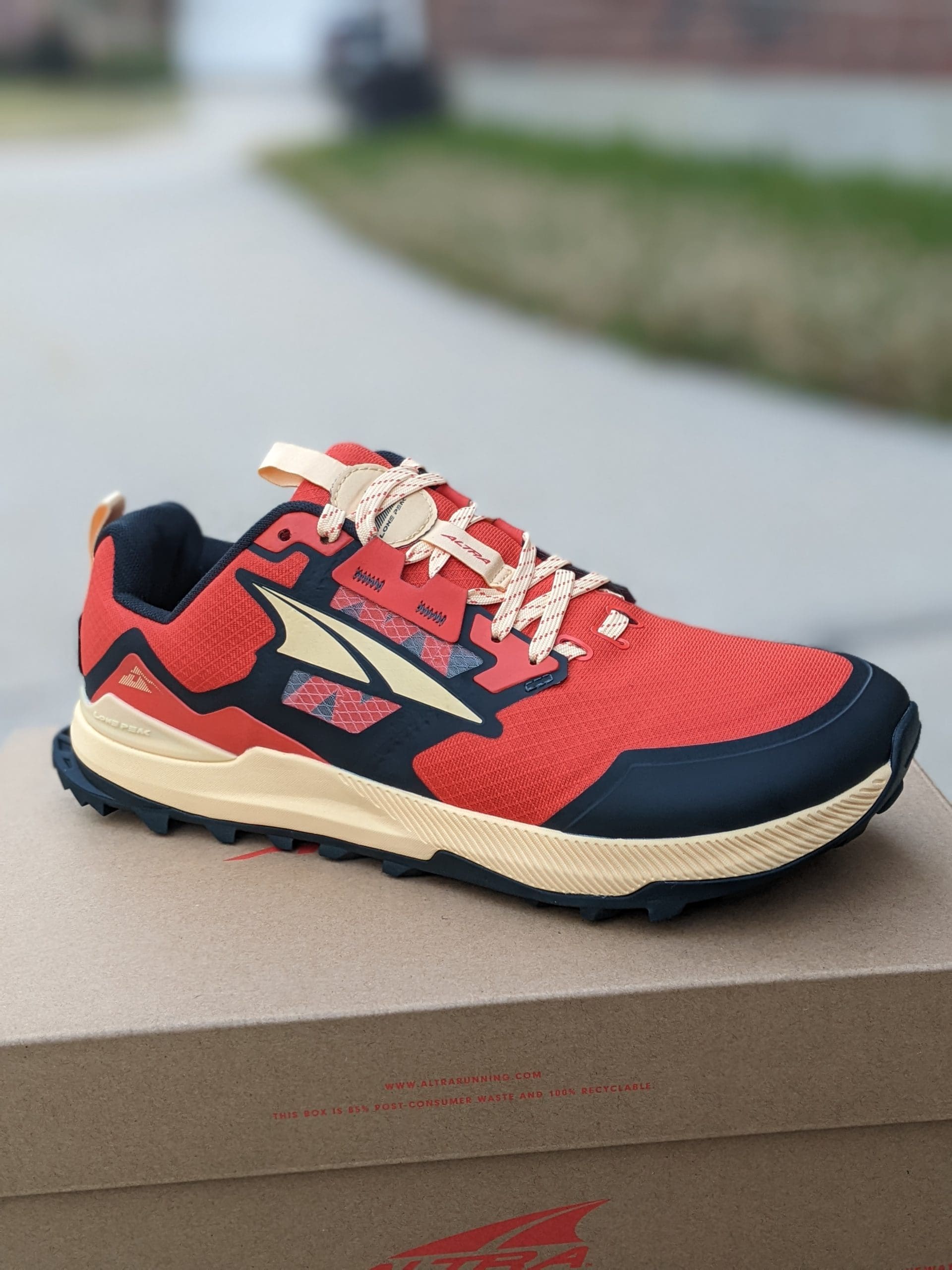
The Altra Lone Peak is a great shoe if you have especially wide or voluminous feet.
The vast amount of space around the toes will give you room to splay and promote a more barefoot-like movement, and while the Superior is wide, it lacks the volume of the Lone Peak.
If you have wide feet, the Altra Lone Peak’s are likely the best shoes for you because they have a wide option which is even more forgiving than their standard version.
With a gentle balance between responsiveness and cushion, the ErgoMax is built for long distances and keeps its form for 100’s of miles. That extra 4mm of cushioning the Lone Peak has over the Superior makes a big difference on a long run. You’ll sacrifice a little ground feedback, so it is a balance between feel, and performance.
On more technical trails, I often find the reduction in ground feel unnerving, wishing I had my Superiors on instead.

The Lone Peak heel lock beats out all other shoes in the Altra trail range. The heel counter is small and unobtrusive. The heel cup molds your heel and reduces the possibility of slipping, further eliminating the ever-problematic blister. Pair the heel cup with the numerous high eyelets to get an all-around wrap that is simple and 100% secure. Anyone with a more narrow, smaller heel should consider the Superior first.
The MaxTrac outsole covers the whole sole! The outsole was the big update in version 7, and i; with a deep, multi-directional chevron design, the grip is not an issue. But I feel it may come up short on the longevity test. The rubber used is reasonably soft and tacky, and in the past, rubbers like this have worn very fast for me.
AltraRunning.com
$150
(30-day free exchange)
The most minimal offering Altra currently has in the trail lineup –and little has changed since its first inception.
The Altra Superior has a flat, nimble, comfortable shell for your foot with a little cushioning. If you’re looking for a fast-flying race shoe with enough ground feel to keep you dancing over rocks, this lightweight option is a top choice.
The Superior has an oddly soft midsole considering it’s a lower stack height, but it still maintains a great ground feel. The tactile feedback helps you adjust when running on uneven terrain with a ton of ground feel –but with ground feel comes drawbacks. Sometimes those rocks can be sharp, so the shock of them is something that you may have to get used to. Just remember it can take around 20km to break into your Superiors. If you can’t deal with feeling the ground, jump back to the Lone Peak.

The removable rock plate allows you to customize the ride. It may be thin and full of holes, but a rock plate works. It turns a sharp point into a smoothed-out lump. You’ll be hard-pressed to find this type of customizability on other shoes in this price range.
Soft, lightweight, and thin, the comfortable upper could be a point of breakdown. If you have a fight with a sharp rock, the rock will win. You’ll likely rip through the upper material because it’s soft and flexible fabric. It’s unlikely, but if you’re worried about longevity, try out the Lone Peak first.
The burrito-style tongue isn’t really a tongue. There are plenty of poorly designed tongues out there, and this isn’t one of them. Altra has got around the tongue slipping issue by completely attaching one side! And the other side is even semi-attached with a gusset, so you’re unlikely to have issues with rocks in the shoe. It’s not for everyone, but I for one, am a fan.
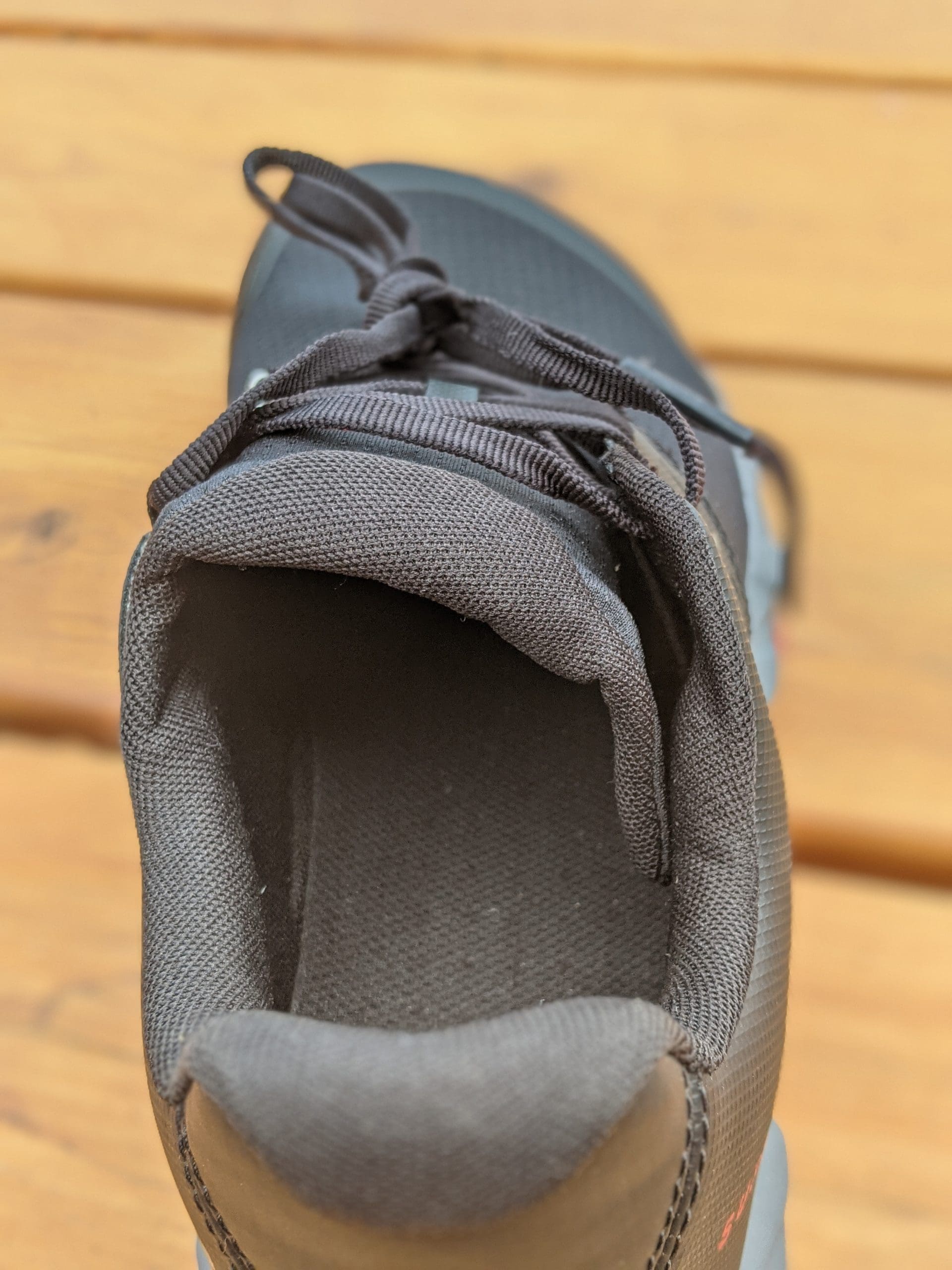
A similar fitting heel to the Lone Peak, if not a little narrower. Even though the lacing looks a little strange with material loops on one side and eyelets on the other, the upper eyelets still offer the option of a lace lock, keeping that heel firmly in place.
The design of the outsole differs from the Lone Peak, but again it falls short. The outsole on the Superior is still decent, but not outstanding. The MaxTrac rubber has held up “ok” to +300km of abuse, and the level of grip is good enough. Considering the Superior is not trying to win the award of the best grip on the trail running scene, I’m happy with where it’s at.
Again, it has a wide toe box, but where’s the volume at? Yes, you can spread your toes out, and the upper is very forgiving to oddly shaped feet, but strangely, I found my toenails pressed on the top of the shoe. In the end, I swapped out the insole for a thin Inov8 pair, and that solved the issue. If you’re desperate for lots of toe volume, stick with the Lone Peak.
For a full breakdown review of the Altra Superior 5, check out my full review.
AltraRunning.com
$130
(30-day free exchange)
These are both Altra shoes, so they’re going to be similar” zero drop shoes with a wider fit. But they serve a slightly different audience.
Differences
Looking at a side-by-side comparison of the shoes highlights the differences fairly quickly. It all comes down to size and bulk.
Cushion
Can 4mm’s really make a difference? That’s right, the Lone Peak only has 4mm more cushion than the Superior. That sounds like nothing, but on a run, it’s a world of difference.
When you encounter super sharp rocks on the trail, you’re going to want that extra cushion to soften the blow. And when going the extra distance, a more forgiving midsole can help.
Don’t get me wrong, there are drawbacks to large stack heights.
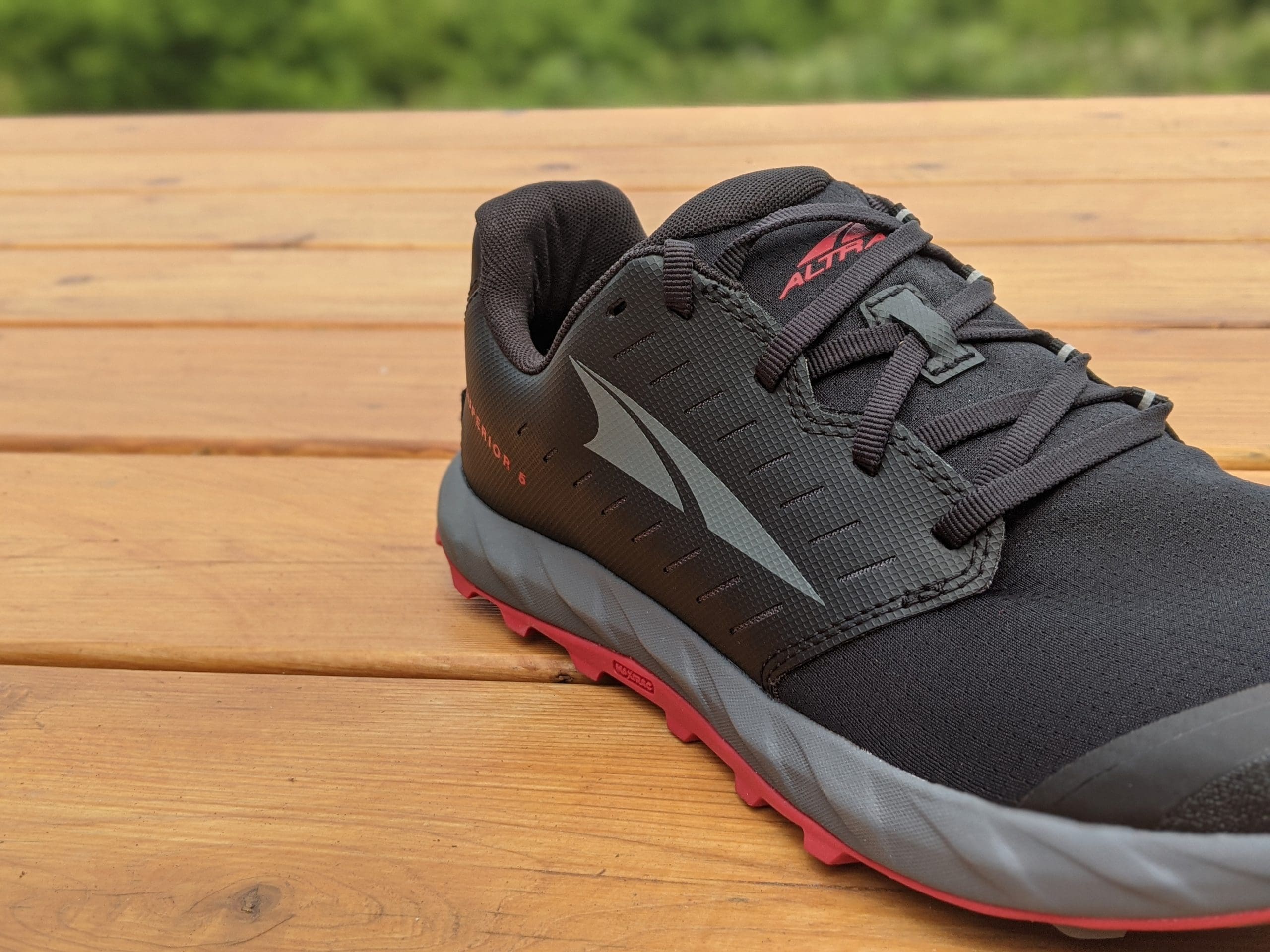
More cushion means less ground feel, which results in less sensory feedback and the inability to adapt to the terrain.
I’ve found that I have a much higher tendency to roll ankles in higher stack heights, one, because my foot is higher off the ground so there’s a higher point to roll from, and two, because of the lack of feedback I’m receiving from the uneven surface. When you have sensory input, you can react much faster and possibly save yourself from rolling your ankle.
That’s all I’ve got to say about the stack height differences between the two shoes, now let’s talk about the foams being used.
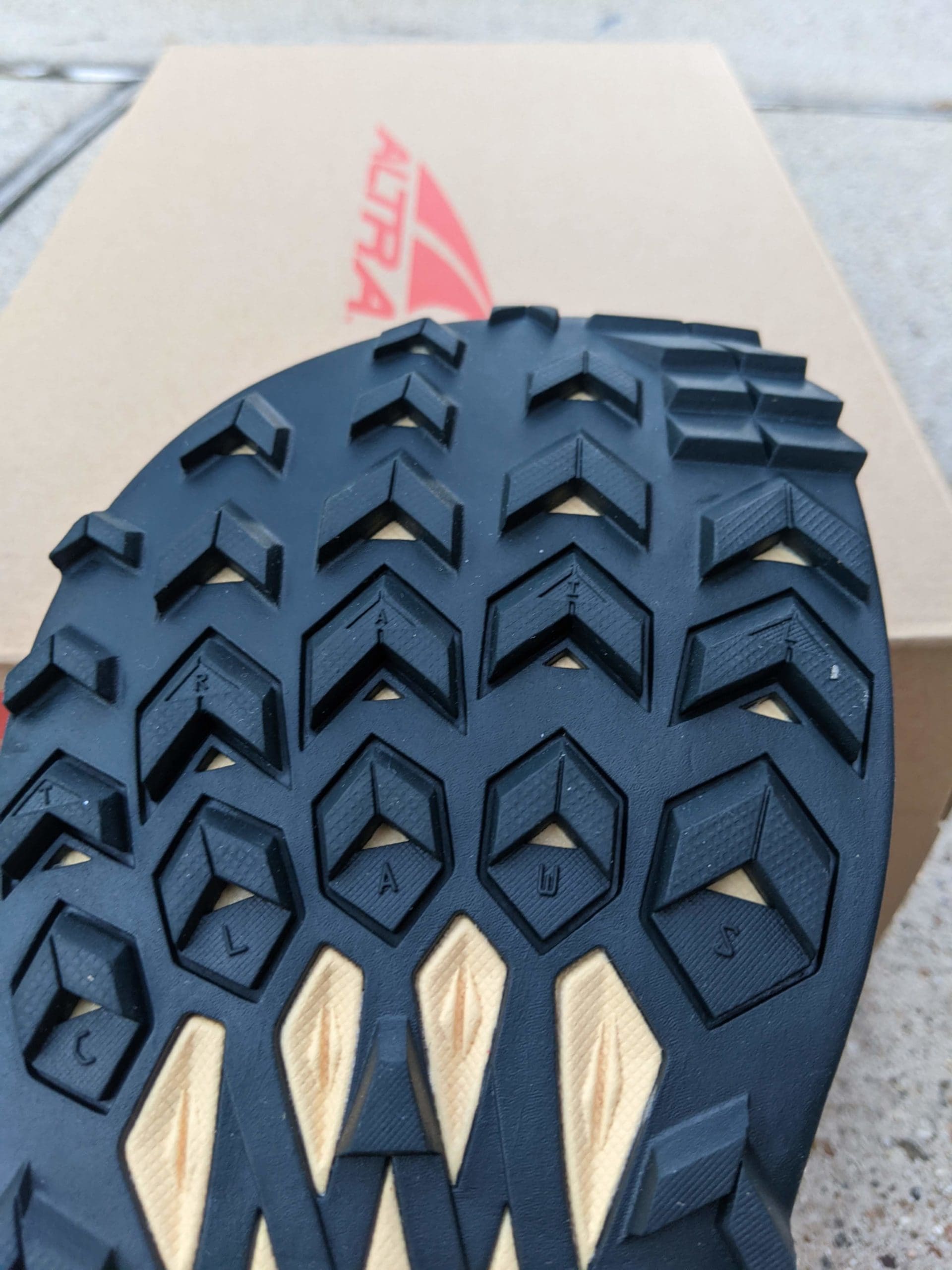
The Superior uses the Quantic midsole foam, whereas the Lone Peak is sporting the Ego foam.
I feel like the differences in foams are usually overhyped, but in these two cases, there’s still a difference to be felt.
The Lone peak felt plush right out of the box. Soft, but not squishy, and firm enough to pick up the speed.
Whereas, the Superior took a few miles to break in. When I first pulled the shoe on, it was pretty solid and encouraged forward motion with every step. But after 20km, the midsole softened, to the point where it’s the shoe I reach for any technical terrain (I just ran a 50km in them).
Volume, Width, and sizing
With shoe sizing, we often have a number that we stick to. But how can a single number encompass all the differences in width, volume, and length that shoes can have? Well, it doesn’t. And nothing makes that more obvious than the difference between these two shoes.
Whereas both shoes have wide toe boxes, the Lone Peak has a ton of volume…all over the shoe!
If you’re someone that often feels squished in running shoes, check out the Lone Peak. I’m confident that it’d work for anyone with larger, more voluminous feet. And if you don’t, consider trying a half size down in the Lone Peak so your feet don’t drown.
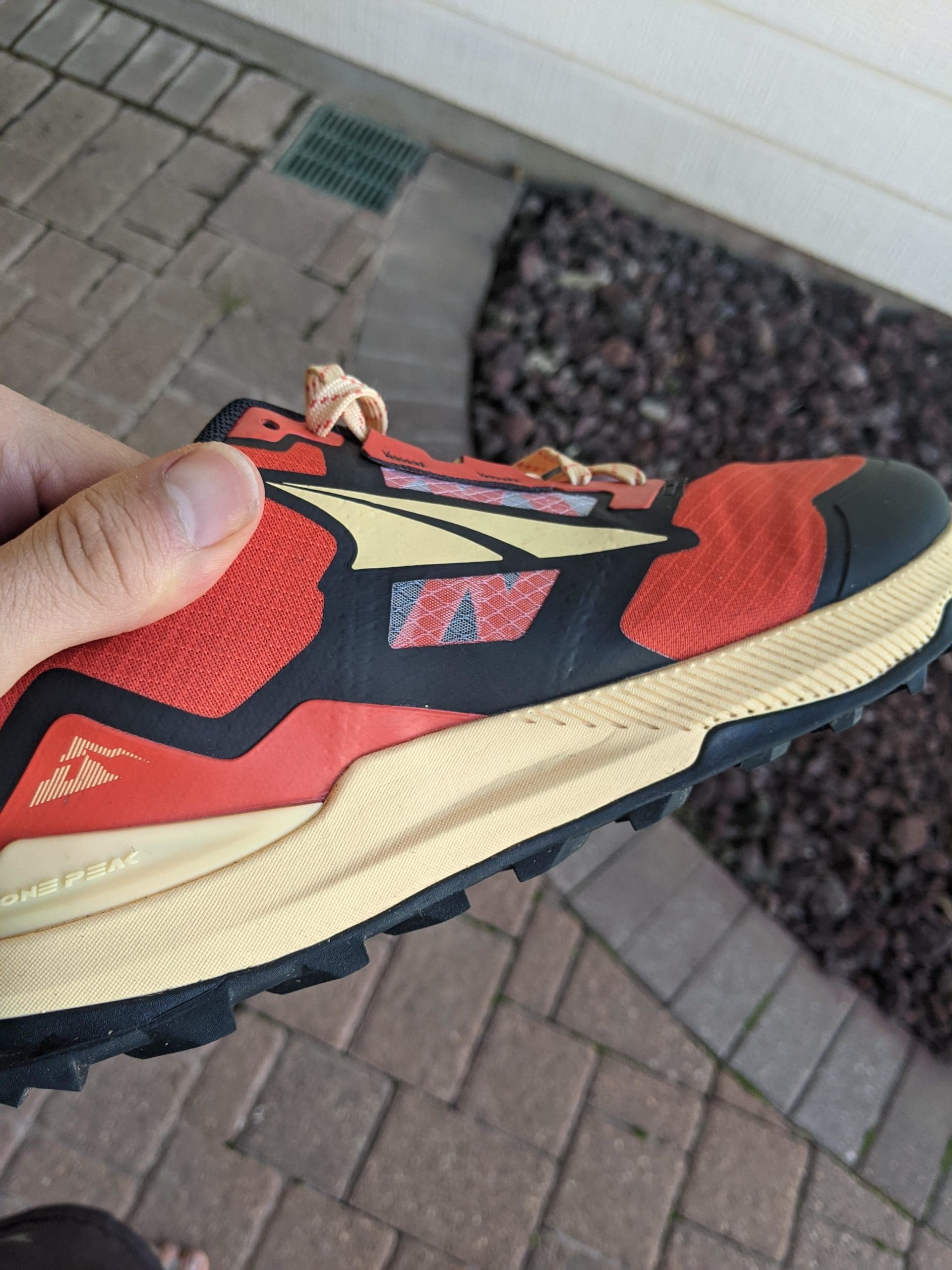
As for the Superior, some may be disappointed. Yes, the toe box is still wide, but it lacks volume. I even swapped out the thicker insoles for a thinner pair just so my big toe was not pressing against the upper.
If you’re coming from a traditional shoe, you’ll likely not feel much difference here. But if you’ve been an Altra fan in the past, it’s something to take note of.
Similarities
Now we know where the shoes differ, let’s look at the similarities. Overall, I feel the shoes have the same DNA. And if you’re comfortable in one, then the other will “feel” like the same type of shoe, with a couple of unique features.
Flexibility and Structure
Neither of these are minimal shoes. They both hold far too much cushion to be given that name, but in many other aspects, they are close to a barefoot feel.
You can flex the shoes in every which way you’d like. There’s a little resistance due to the amount of cushion, but there are no structural components that inhibit the ability to utilize your foot in a natural manner.
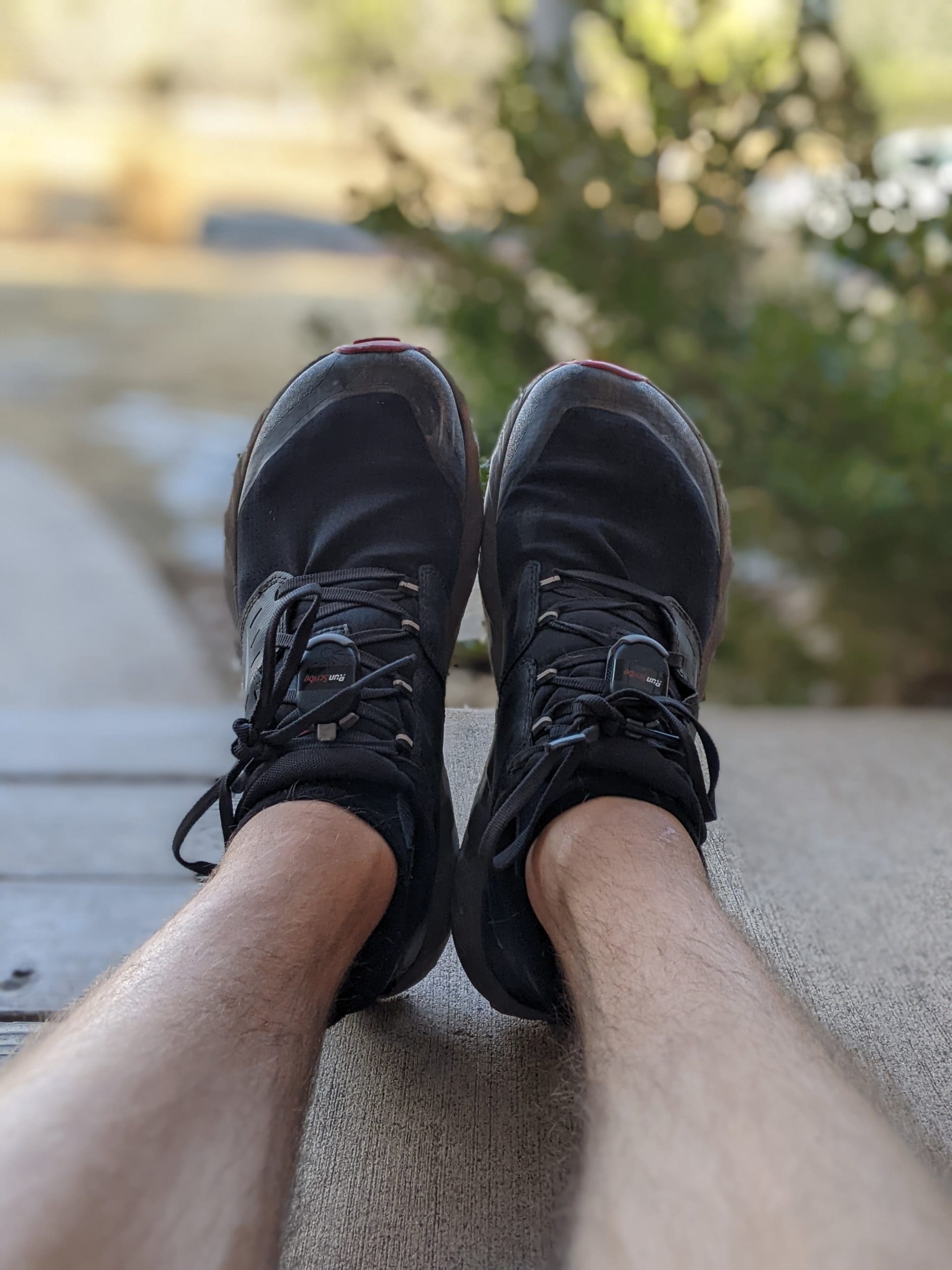
Looking to the heel, there’s no ridge plastic like you’d see in many other popular shoe brands. Again enhancing that natural foot motion.
That means if you’re coming from a stable shoe like the Brooks Adrenaline or Hoka Stinson, then these may not be the Altras for you. Instead, I’d suggest looking at the Altra Olympus and the new Timp.
Outsole
In a side-by-side comparison, the Lone Peak and Superior appear to have very different outsoles, but in my own experience, I’ve found they perform very similarly to each other.
Both shoes use Altra MaxTrac rubber, which is no match to Vibram, or Continental rubber, but it’s “OK”.
In all accounts, I feel the outsoles get the job done, nothing more, and nothing less.
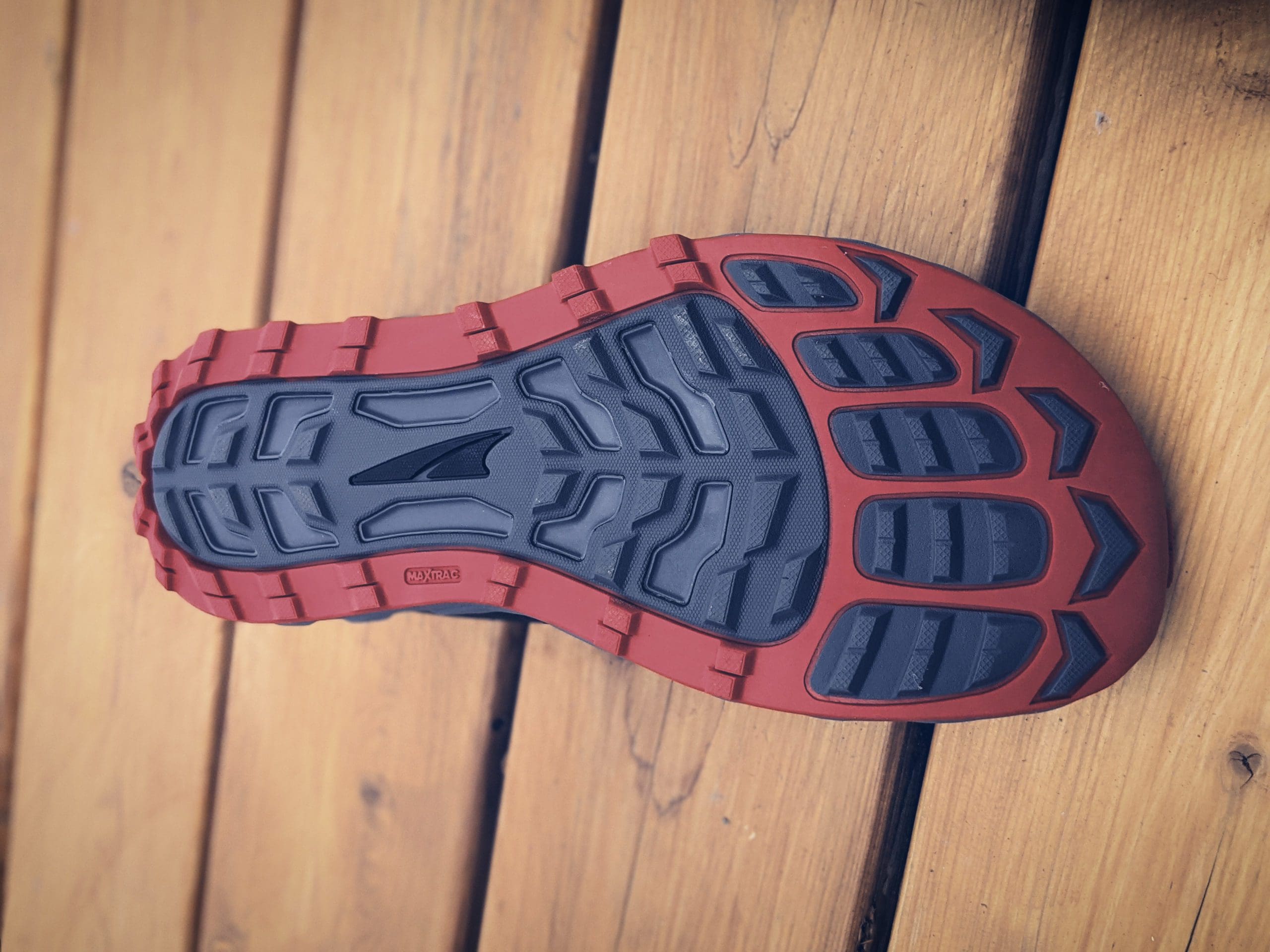
I also believe that they will be the area of shoes that will give out first. I have a fair bit of wear on the front lugs after 200 miles, which again is ok, but not outstanding.
For drier smooth trails or rocky terrain, Maxtrac with both lug patterns work perfectly fine. But when you introduce wet conditions and mud, you’ll likely want to look for a different shoe. These outsoles are not made for the boggy conditions of the UK or the wet days in the Pacific North West. But with dryer, rocky trails, you’re golden.
Both the Altra Lone Peak, and Superior are Altra models that have stood the test of time, and they only continued to improve over the years. The fact that fans keep on returning to the models shows that they’re doing something right.
There’s a simple formula for choosing between the two shoes in order of importance.
And that’s it! Everything else is pretty minor!
Now, are you interested in how these two shoes change your gait? And how does that compares to the whole Altra trail running lineup? Will Altras naturally make you a forefoot striker?
I recently tested each shoe with the same gait analysis used in Universities, and found that, yes indeed shoes do make a difference, even within the same brand!
Check out the “gait analysis” section in the Altra trail runners’ buying guide.
